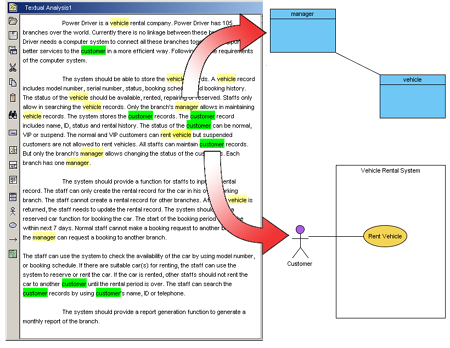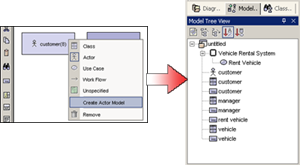|
| |
| Related Resources |
|
| HTML Tutorial |
|
|
| Interactive Tutorial |
|
|
|
|
|
|
|
|
Textual Analysis Support in Visual Paradigm for UML
Textual Analysis is a feature that assists you to perform requirement capturing and analysis.
Textual Analysis is started from a problem statement. There are different types of problem statement
(e.g. business process and execution procedure). Each type of problem statement provides different levels of detail of the
user's requirement. The Textual Analysis in Visual Paradigm for UML
can assist you to extract the problem statement and draw diagrams. In Visual Paradigm for UML, you can identify classes,
use cases and actors from the problem statement.
 |
| Textual Analysis Mechanism |
First of all, we will
identify candidate classes from the problem statement. In other words, we
identify some nouns or noun phrases that are relevant to the problem domain.
|
After identifying enough candidate classes, it is
time to create a data dictionary for these classes. A data dictionary
should contain precise descriptions as well as the scope for each class.
|
The identified candidate classes can be used to
create various models such as Actor, Use Case, Class, and Workflow. Models
created will be shown in the project tree (Model Tree View). These models
can then be used to create UML diagrams. In this example, we have created
class diagram and use case diagram.
|
|
|





